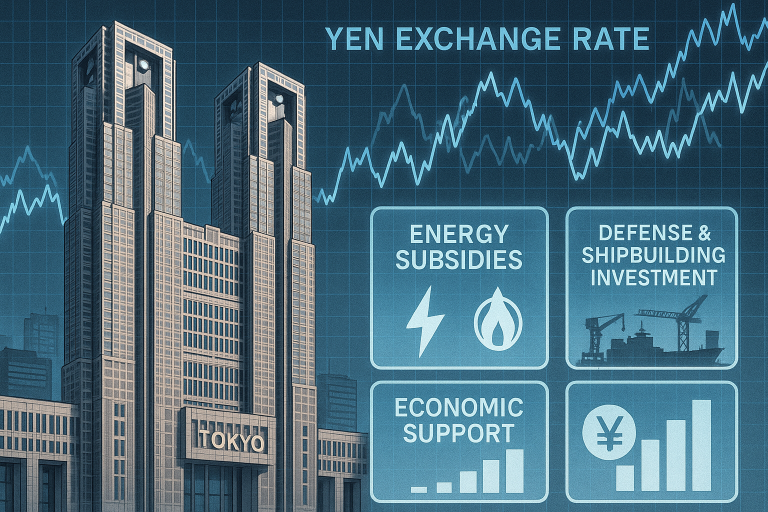Japan’s cabinet on Friday approved a sweeping ¥21.3 trillion ($135.5 billion) stimulus package aimed at bolstering economic growth, easing the burden of rising living costs, and strengthening the country’s defense and diplomatic capabilities.
The measures mark the first major policy initiative under Prime Minister Sanae Takaichi, who took office seven weeks ago.
The package, which is Japan’s largest since the Covid-19 pandemic, comes amid market volatility, concerns about the government’s fiscal trajectory, and growing pressure on households coping with higher prices.
Comprehensive measures target prices, energy costs and tax relief
Public broadcaster NHK reported that the package is built on three pillars: addressing rising prices, strengthening the economy, and enhancing Japan’s defense and diplomatic framework.
To support consumers directly, the government will expand local grants and introduce new subsidies for electricity and gas bills.
The energy subsidies, which begin in January, are expected to provide about ¥7,000 to a standard household over a three-month period.
The cabinet also announced the elimination of gasoline taxes as part of efforts to cushion households from inflation, which has remained above the Bank of Japan’s target for much of the past year.
In addition to consumption support, the package allocates ¥2.7tn in tax cuts, while a significant portion of the spending will be covered by a supplementary budget to be submitted in the coming weeks.
This supplementary budget is expected to be 27% larger than the one secured last year under Takaichi’s predecessor.
Funding will also come from a special account and further issuance of government bonds.
Defense, shipbuilding and AI emerge as investment priorities
A central component of the stimulus focuses on strengthening national security-related industries.
Japan plans to establish a 10-year fund to enhance its shipbuilding capabilities, an area of growing strategic importance amid rising geopolitical tensions in the region.
The government also reiterated its commitment to raising defense spending to 2% of GDP by fiscal 2027, aligning Japan more closely with NATO benchmarks.
Investment is expected to flow into emerging technologies, including artificial intelligence, reflecting Takaichi’s push to modernize the country’s security and industrial base.
Some measures in the package are designed to mitigate potential economic risks arising from US President Donald Trump’s tariffs, which pose a threat to Japan’s export-driven economy.
Market reaction and fiscal concerns
Financial markets reacted cautiously to the announcement.
The yen firmed slightly to around ¥157.13 per US dollar in early afternoon trading following the cabinet’s approval.
The movement followed a turbulent week in which the yen fell to a 10-month low and Japanese government bond (JGB) yields climbed sharply.
Yields on 30 and 40-year JGBs hit record highs on Thursday, while the benchmark 10-year yield reached its highest level since the 2008 global financial crisis earlier in the week.
After the stimulus plan was confirmed, the 10-year yield edged down one basis point to 1.795%.
Global fund managers have expressed concern that Takaichi’s aggressive fiscal expansion may further strain Japan’s already challenging financial position.
With additional government bond issuance expected to fund the package, questions remain about the long-term sustainability of Japan’s public finances.
Nonetheless, the government argues that decisive action is necessary to support households, sustain growth and prepare Japan for a more uncertain global economic and security environment.
The post Japan unveils $135bn stimulus package to support economy, households and defense capabilities appeared first on Invezz

